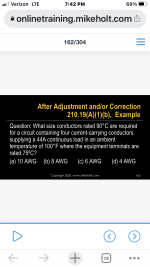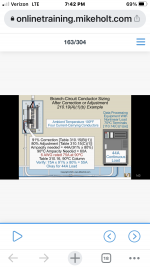The tables are all based on the same equation of sqrt((Tc - Ta)/(Tc-T0)), where Tc is the temperature rating of the conductor, Ta is the ambient temperature (or ambient temperature with an applicable adder), and T0 is the standard test ambient temperature of the conductor that corresponds to its published or tabulated ampacity. One table is for T0 = 30 Celsius, and the other table is for T0 = 40 Celsuis. In the scope of work that I do, I've never used a type of conductor where T0 = 40 C, since Table 310.16 ampacities are all based on 30 C as the ambient temperature.
If you perform your calculations with this formula, you can forget about the two tables you mentioned entirely. The tables give you the same results for the worst-case-scenario temperature within each 5-Celsius temperature range. You are permitted to either use the square root formula, or the temperature correction factor tables, whichever you see fit.



